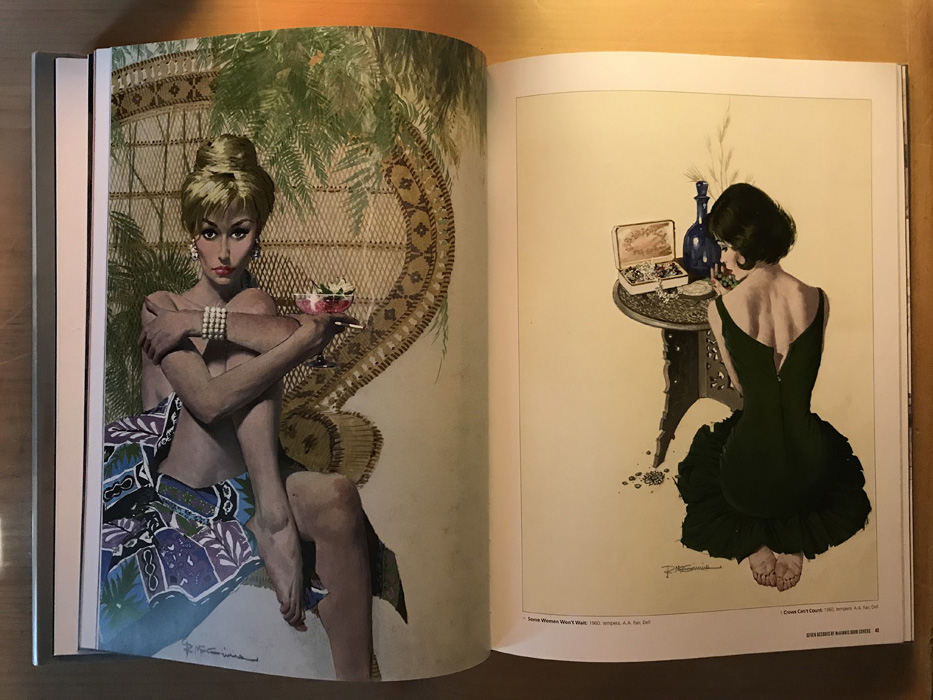Reading a retrospective book on Robert E McGuinnis reminded me of a question: Is illustration art?
For many traditional painters and visual artists in general, illustration and fine art painting differentiate on purpose, execution and even subject matter. The way I see it, there’s no difference between either or as long as if its done using tactile tools like brush, pigment, and surface. So painting is painting, whether its purpose is to spread the gospel in a church, sell a paperback novel like McGinnis, hang in a gallery wall or building lobby.
The book documents how before the 70s, illustrations were often discarded by art directors once the assignment was done. If lucky, the illustration would be given away or get lost in a warehouse. It wasn't until recent years that illustrators gained the power to retain their work and that’s how we are able to appreciate the illustration work from artists like McGinnis.
His detective novel covers is what I enjoy most about the book. I love the way he illustrated women; they’re not just sensual, pretty goddesses looking shallow as in pin-up covers from decades earlier. Much of the work he created in the first stages of his professional career, summing over 200 covers in the first decade, stood out for his effective use of color and his ability to match his illustrations to a poignant scene in the novel or story plot.
The use of photography and working with professional models was substantial to his workflow. In the book, McGinnis shares how he photographed his models using a Rollei camera and black and white negative film, (which he would process himself). With the use of photography, McGuinnis would render his sketches and preliminary studies; and very often, he would make alterations to his portraits to match the story. In this book, he also shares how he would collaborate with professional photographers when his job required a higher level of photographic technicality.
Amazong Link: The Art of Rover E McGinnis by Robert E. McGhinnis and Art Scott





